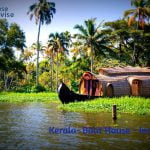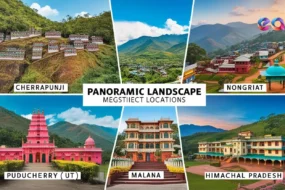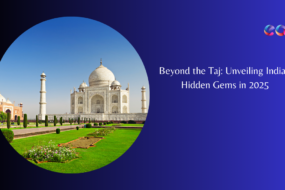
Waterfalls are one of nature’s most spectacular and awe-inspiring creations. They are also a perfect destination for families with kids who want to enjoy a refreshing and memorable getaway. Whether you want to admire the beauty of the cascading water, feel the mist on your face, listen to the soothing sound, or explore the surrounding flora and fauna, waterfalls offer something for everyone. In this article, we will tell you why waterfalls are a great choice for families with kids, and introduce you to some of the best waterfalls in India that are safe and accessible for all ages. We will also give you some tips and tricks for planning a family-friendly waterfall escape that will leave you with lasting memories.
Why waterfalls are a great destination for families with kids
Waterfalls are not only stunning to look at, but they also have many benefits for physical and mental health, education and recreation, and safety and accessibility. Here are some of the reasons why waterfalls are ideal for families with kids:
The benefits of waterfalls for physical and mental health
Waterfalls are a natural source of negative ions, which are molecules that have more electrons than protons. Negative ions are known to have positive effects on human health, such as improving mood, reducing stress, enhancing immunity, and purifying the air . Negative ions are especially abundant near waterfalls, where the water droplets collide with each other and the air, creating a high concentration of these beneficial molecules. By spending time near waterfalls, you and your kids can enjoy the benefits of negative ions and feel more relaxed and energized.
Waterfalls are also a great way to cool off and hydrate your skin, especially in the hot and humid climate of India. The water vapor from the waterfalls can moisturize your skin and hair, and prevent dryness and irritation. The water temperature can also regulate your body temperature and help you cope with the heat. Moreover, waterfalls can stimulate your blood circulation and metabolism, as the water pressure massages your muscles and organs, and the cold water triggers a thermogenic response. By taking a dip or a shower under the waterfalls, you and your kids can improve your physical well-being and have fun at the same time.
The educational and recreational opportunities of waterfalls
Waterfalls are not only a natural wonder, but also a natural classroom. They can teach you and your kids about various aspects of science, geography, history, and culture. For example, you can learn about how waterfalls are formed by the erosion of rocks and the flow of water, and how they change over time due to natural or human factors. You can also learn about the different types of waterfalls, such as plunge, horsetail, fan, or tiered, and how they are classified by their height, width, shape, or volume. You can also learn about the biodiversity and ecology of the waterfalls and their surroundings, and how they support various plants and animals. You can also learn about the local legends and myths associated with the waterfalls, and how they reflect the beliefs and values of the people who live near them.
Waterfalls are also a natural playground, where you and your kids can engage in various activities and games. For example, you can hike or trek to the waterfalls, and enjoy the scenic views and the fresh air along the way. You can also swim or splash in the pools or streams near the waterfalls, and feel the thrill of the water. You can also take pictures or videos of the waterfalls, and capture the beauty and the motion of the water. You can also picnic or camp near the waterfalls, and enjoy the food and the company of your family. You can also try some adventure sports or activities near the waterfalls, such as rafting, kayaking, zip-lining, or rappelling, and challenge yourself and your kids to overcome your fears and have fun.
The safety and accessibility features of waterfalls
Waterfalls are not only a natural attraction, but also a natural accommodation. They are usually safe and accessible for families with kids, as they have various features and facilities that cater to their needs and preferences. For example, most waterfalls in India have well-maintained roads and paths that lead to them, and are easily reachable by car, bus, train, or bike. Some waterfalls also have stairs, ramps, bridges, or platforms that allow you to get closer to them, and enjoy different perspectives and angles. Some waterfalls also have guardrails, fences, or signs that warn you of the potential dangers and hazards, and prevent you from getting too close or falling off. Some waterfalls also have restrooms, changing rooms, lockers, or showers that enable you to freshen up and store your belongings. Some waterfalls also have shops, stalls, or vendors that sell food, drinks, souvenirs, or equipment, and provide you with convenience and comfort.
The best family-friendly waterfalls India for families with kids
India is a land of diverse and dazzling waterfalls, with more than 2000 waterfalls spread across its 28 states and 8 union territories. Each waterfall has its own unique charm and character, and offers a different experience and adventure for you and your kids. However, some waterfalls stand out from the rest, as they are more family-friendly and suitable for kids of all ages. Here are some of the best waterfalls in India for families with kids, that you should not miss on your next trip:
Jog Falls, Karnataka – the second highest plunge waterfall in India
Jog Falls, also known as Gerosoppa Falls or Joga Falls, is one of the most spectacular and majestic waterfalls in India. It is located in the Shimoga district of Karnataka, and is formed by the Sharavathi River, which splits into four streams, namely Raja, Rani, Roarer, and Rocket, before plunging down a cliff of 253 meters, creating a magnificent sight. Jog Falls is the second highest plunge waterfall in India, after Nohkalikai Falls in Meghalaya, and the 13th highest in the world. It is also the highest untiered waterfall in India, meaning that the water does not touch the rocks or the ground until it reaches the bottom.
Jog Falls is a great destination for families with kids, as it offers a variety of activities and attractions for everyone. You can admire the beauty and the power of the waterfall from various viewpoints, such as the British Bungalow, the Watkins Platform, or the Bombay Bungalow, and enjoy the panoramic views of the valley and the river. You can also hike or trek to the bottom of the waterfall, and experience the thrill and the spray of the water. You can also visit the nearby attractions, such as the Linganamakki Dam, the Sharavathi Wildlife Sanctuary, or the Honnemaradu Island, and explore the nature and the culture of the region. You can also stay at the Jog Falls Guest House, which is run by the Karnataka Tourism Department, and offers comfortable rooms and amenities, as well as a restaurant and a garden.
The best time to visit Jog Falls is during the monsoon season, from June to September, when the waterfall is at its fullest and most impressive. However, you can also visit it during the winter season, from October to February, when the weather is pleasant and the crowd is less. The summer season, from March to May, is not recommended, as the waterfall is almost dry and the temperature is high. The entry fee to Jog Falls is free, and the timings are from 6 am to 6 pm.
Athirappilly Falls, Kerala – the largest waterfall in Kerala and the backdrop of many movies
Athirappilly Falls, also known as the Niagara Falls of India, is one of the most popular and picturesque waterfalls in India. It is located in the Thrissur district of Kerala, and is formed by the Chalakudy River, which flows through the Vazhachal Forest, before dropping down a height of 80 feet, creating a scenic and serene sight. Athirappilly Falls is the largest waterfall in Kerala, and one of the largest in India, with a width of 330 feet. It is also one of the most filmed waterfalls in India, as it has been featured in many movies, such as Dil Se, Guru, Raavan, Baahubali, and many more.
Athirappilly Falls is a great destination for families with kids, as it offers a lot of fun and excitement for everyone. You can watch the waterfall from various vantage points, such as the top, the bottom, or the side, and enjoy the different views and sounds of the water. You can also swim or play in the pools or the river near the waterfall, and feel the cool and refreshing water. You can also visit the nearby attractions, such as the Vazhachal Falls, the Charpa Falls, the Thumboormuzhi Dam, or the Sholayar Dam, and discover the beauty and the diversity of the area. You can also stay at the Rainforest Resort, which is situated on the banks of the Chalakudy River, and offers luxurious rooms and cottages, as well as a restaurant and a spa.
The best time to visit Athirappilly Falls is during the monsoon season, from June to October, when the waterfall is at its peak and most splendid. However, you can also visit it during the winter season, from the winter season, from November to February, when the weather is mild and the crowd is moderate. The summer season, from March to May, is also possible, but the waterfall may be less voluminous and the temperature may be high. The entry fee to Athirappilly Falls is ₹15 for adults and ₹10 for children, and the timings are from 8 am to 6 pm.
Dudhsagar Falls, Goa – the milky white waterfall that flows through a wildlife sanctuary
Dudhsagar Falls, also known as the Sea of Milk, is one of the most stunning and iconic waterfalls in India. It is located in the Sanguem district of Goa, and is formed by the Mandovi River, which flows through the Bhagwan Mahavir Wildlife Sanctuary, before plunging down a height of 310 meters, creating a spectacular sight. Dudhsagar Falls is the fourth highest waterfall in India, and one of the highest in the world. It is also one of the most scenic waterfalls in India, as it is surrounded by lush green forests and rocky cliffs, and has a railway bridge running across it.
Dudhsagar Falls is a great destination for families with kids, as it offers a lot of adventure and fun for everyone. You can reach the waterfall by trekking, jeep safari, or train, and enjoy the different modes of transportation and the views along the way. You can also admire the waterfall from various points, such as the bottom, the top, or the middle, and enjoy the different perspectives and angles of the water. You can also swim or play in the pools or the river near the waterfall, and feel the milky white water. You can also visit the nearby attractions, such as the Tambdi Surla Temple, the Devil’s Canyon, or the Dudhsagar Spice Plantation, and learn more about the history and culture of the region. You can also stay at the Dudhsagar Resort, which is situated near the waterfall, and offers cozy cottages and tents, as well as a restaurant and a swimming pool.
The best time to visit Dudhsagar Falls is during the monsoon season, from June to September, when the waterfall is at its fullest and most majestic. However, you can also visit it during the winter season, from October to February, when the weather is pleasant and the crowd is less. The summer season, from March to May, is not recommended, as the waterfall is almost dry and the temperature is high. The entry fee to Dudhsagar Falls is ₹50 for adults and ₹25 for children, and the timings are from 9 am to 5 pm.
Dhuandhar Falls, Madhya Pradesh – the misty waterfall that creates a smoky effect
Dhuandhar Falls, also known as the Smoke Cascade, is one of the most impressive and unique waterfalls in India. It is located in the Jabalpur district of Madhya Pradesh, and is formed by the Narmada River, which narrows down and falls from a height of 30 meters, creating a roaring sound and a misty effect. Dhuandhar Falls is one of the most popular waterfalls in Madhya Pradesh, and one of the most visited tourist attractions in the state. It is also one of the most photogenic waterfalls in India, as it offers a stunning contrast of the white water and the black rocks.
Dhuandhar Falls is a great destination for families with kids, as it offers a lot of entertainment and excitement for everyone. You can watch the waterfall from various platforms, such as the Dhuandhar View Point, the Dhuandhar Garden, or the Dhuandhar Rope Way, and enjoy the different views and sounds of the water. You can also take a boat ride on the Narmada River, and get closer to the waterfall and the marble rocks. You can also visit the nearby attractions, such as the Bhedaghat Marble Rocks, the Chausath Yogini Temple, or the Balancing Rock, and explore the natural and cultural wonders of the area. You can also stay at the Hotel Marble Rocks, which is located near the waterfall, and offers comfortable rooms and amenities, as well as a restaurant and a garden.
The best time to visit Dhuandhar Falls is during the winter season, from October to March, when the weather is cool and the waterfall is moderate. However, you can also visit it during the monsoon season, from July to September, when the waterfall is at its peak and most spectacular. The summer season, from April to June, is not recommended, as the weather is hot and the waterfall is less impressive. The entry fee to Dhuandhar Falls is free, and the timings are from 6 am to 8 pm.
Nohkalikai Falls, Meghalaya – the tallest plunge waterfall in India
Nohkalikai Falls, also known as the Jump of Ka Likai, is one of the most beautiful and tragic waterfalls in India. It is located in the East Khasi Hills district of Meghalaya, and is formed by a rain-fed stream, which falls from a height of 340 meters, creating a breathtaking sight. Nohkalikai Falls is the tallest plunge waterfall in India, and the third highest in the world. It is also one of the most colorful waterfalls in India, as it changes its hue depending on the season, from green to blue to white.
Nohkalikai Falls is a great destination for families with kids, as it offers a lot of wonder and awe for everyone. You can admire the waterfall from various viewpoints, such as the Nohkalikai View Point, the Nohkalikai Eco Park, or the Nohkalikai Skywalk, and enjoy the panoramic views of the valley and the waterfall. You can also learn about the legend behind the waterfall, which is about a woman named Ka Likai, who jumped off the cliff after discovering that her husband had killed and cooked her daughter. You can also visit the nearby attractions, such as the Seven Sisters Falls, the Mawsmai Cave, or the Nongriat Village, and discover the beauty and the diversity of the region. You can also stay at the Polo Orchid Resort, which is located near the waterfall, and offers luxurious rooms and cottages, as well as a restaurant and a spa.

The best time to visit Nohkalikai Falls is during the winter season, from November to February, when the weather is clear and the waterfall is visible. However, you can also visit it during the monsoon season, from June to October, when the waterfall is at its most voluminous and magnificent. The summer season, from March to May, is not recommended, as the weather is foggy and the waterfall is obscured. The entry fee to Nohkalikai Falls is ₹10 for adults and ₹5 for children, and the timings are from 8 am to 5 pm.
Tips and tricks for planning a family-friendly waterfall escape
Now that you know some of the best waterfalls in India for families with kids, you might be wondering how to plan a perfect waterfall escape. Here are some tips and tricks that can help you make the most of your trip:
The best time to visit waterfalls in India
The best time to visit waterfalls in India depends on the location and the type of the waterfall. Generally, the monsoon season, from June to September, is the ideal time to see the waterfalls in their full glory, as the rain increases the water flow and the volume of the waterfalls. However, the monsoon season also brings some challenges, such as slippery trails, muddy roads, leeches, mosquitoes, and landslides. Therefore, you need to be careful and prepared for these conditions, and check the weather forecast and the road conditions before you go. Alternatively, you can visit the waterfalls in the winter season, from October to February, when the weather is pleasant and the crowd is less. The waterfalls may not be as impressive as in the monsoon season, but they are still worth seeing. The winter season also offers some advantages, such as clear skies, dry trails, and better visibility. The summer season, from March to May, is not the best time to visit waterfalls in India, as the weather is hot and humid, and the waterfalls are almost dry and dull.
The essential items to pack for a waterfall trip
A waterfall trip requires some specific items that you need to pack for your safety and comfort. Here are some of the essential items that you should not forget to bring:
- A backpack that is waterproof, durable, and spacious enough to fit all your belongings.
- A water bottle that is reusable, leak-proof, and insulated to keep your water cold and fresh.
- A towel that is quick-drying, lightweight, and compact to dry yourself after swimming or splashing in the water.
- A swimsuit that is comfortable, durable, and suitable for the water temperature and the activity level.
- A change of clothes that is appropriate for the weather and the occasion, and that can protect you from the sun, the insects, and the plants.
- A rain jacket or a poncho that is waterproof, breathable, and easy to wear and remove, and that can shield you from the rain, the wind, and the mist.
- A pair of shoes that is sturdy, comfortable, and waterproof, and that can provide you with good grip and support on the slippery and uneven trails and rocks.
- A pair of sandals or flip-flops that is lightweight, flexible, and easy to put on and take off, and that can allow your feet to breathe and dry after getting wet.
- A hat or a cap that is wide-brimmed, adjustable, and sun-protective, and that can cover your head, your face, and your neck.
- A pair of sunglasses that is polarized, UV-protective, and comfortable, and that can protect your eyes from the glare and the dust.
- A sunscreen that is water-resistant, broad-spectrum, and SPF 30 or higher, and that can protect your skin from the sunburn and the damage.
- A bug spray that is effective, safe, and natural, and that can repel the mosquitoes, flies, and other insects that may be near the waterfalls.
- A camera or a phone that is waterproof, shockproof, and high-quality, and that can capture the beauty and the memories of the waterfalls.
- A power bank or a charger that is portable, durable, and compatible, and that can keep your devices charged and ready.
- A snack or a meal that is nutritious, delicious, and easy to carry and eat, and that can provide you with energy and satisfaction.
- A first-aid kit that is comprehensive, compact, and organized, and that can help you deal with any injuries or emergencies.
The dos and don’ts of waterfall etiquette
Waterfalls are a natural treasure that should be respected and preserved by everyone who visits them. Therefore, it is important to follow some basic rules of waterfall etiquette that can ensure your safety and enjoyment, as well as the safety and enjoyment of others. Here are some of the dos and don’ts of waterfall etiquette that you should keep in mind:
- Do be kind and courteous to other visitors, and greet them with a smile and a hello.
- Do stay on the designated trails and paths, and do not wander off or create your own shortcuts.
- Do keep a safe distance from the waterfall and the edge of the cliff, and do not lean over or climb on them.
- Do follow the instructions and warnings posted at the waterfall, and do not enter the restricted or dangerous areas.
- Do keep your voice low and your music off, and do not disturb the peace and tranquility of the waterfall.
- Do respect the wildlife and the plants near the waterfall, and do not feed, touch, or harm them.
- Do keep your pets on a leash and under control, and do not let them run or swim near the waterfall.
- Do leave no trace, and do not litter, graffiti, or damage the waterfall or its surroundings.
- Do enjoy the waterfall and its beauty, and do not forget to take pictures and memories.
Conclusion:
Waterfalls are a wonderful way to experience the nature and the adventure of India. They are also a perfect choice for families with kids who want to have a refreshing and memorable getaway. By following the tips and tricks we have shared in this article, you can plan a family-friendly waterfall escape that will leave you with lasting memories. So, what are you waiting for? Book your waterfall escape today and discover India’s safest and most accessible wonders.













